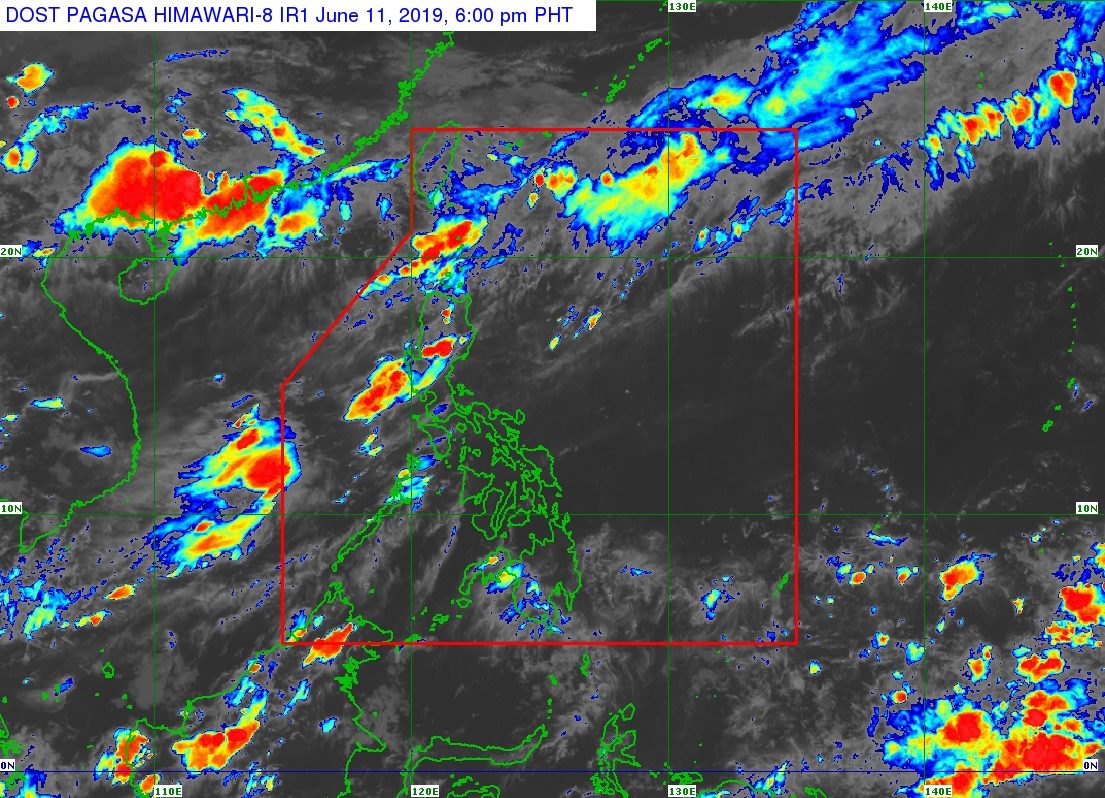SUMMARY
This is AI generated summarization, which may have errors. For context, always refer to the full article.

What’s the weather like in your area? Report the situation through Rappler’s Agos or tweet us at @rapplerdotcom.
MANILA, Philippines – The southwest monsoon or hanging habagat is here.
In a Facebook Live video past 5 pm on Tuesday, June 11, the Philippine Atmospheric, Geophysical, and Astronomical Services Administration (PAGASA) said the southwest monsoon has begun.
“Kasalukuyan pong umiiral na ang southwest monsoon or hanging habagat na nakakaapekto po sa kanlurang bahagi ng Luzon,” said PAGASA Weather Specialist Ariel Rojas.
(The southwest monsoon or hanging habagat is already underway, affecting the western part of Luzon.)
PAGASA defines the southwest monsoon as “warm, moist winds from the southwest causing rains over the western portion of the country,” usually from May or June until September. (READ: FAST FACTS: Tropical cyclones, rainfall advisories)
But PAGASA clarified that while the southwest monsoon has begun, the rainy season has not yet started. Certain criteria must be met first.
“Patuloy po tayong nagmo-monitor sa labintatlong istasyon sa kanlurang bahagi ng Luzon. Kailangan po 7 out of 13 stations ang nakapagtala na ng significant amount of rainfall,” Rojas said.
(We continue to monitor 13 stations in the western part of Luzon. Seven out of 13 stations need to record a significant amount of rainfall.)
According to Rojas, PAGASA might make a declaration on the start of the rainy season in the next few days.
Rojas also said that no weather disturbance is likely to form in or enter the Philippine Area of Responsibility within the next 3 to 5 days. (READ: LIST: PAGASA’s names for tropical cyclones in 2019)
Below is the estimated number of tropical cyclones from June to November:
- June – 1 or 2
- July – 2 or 3
- August – 2 or 3
- September – 2 to 4
- October – 2 or 3
- November – 1 or 2
The estimate for December is expected to be included in PAGASA’s next climate outlook.
So far, the Philippines has had 3 tropical cyclones in 2019:
- Tropical Depression Amang – January
- Tropical Depression Betty – February
- Tropical Depression Chedeng – March
The country gets an average of 20 tropical cyclones per year. But PAGASA earlier said there may be fewer tropical cyclones in 2019 as a weak El Niño persists.
PAGASA said there is a 70% chance that El Niño will continue from June to August, and a 55% to 60% chance that it will still prevail from September to November. – Rappler.com
Add a comment
How does this make you feel?
There are no comments yet. Add your comment to start the conversation.